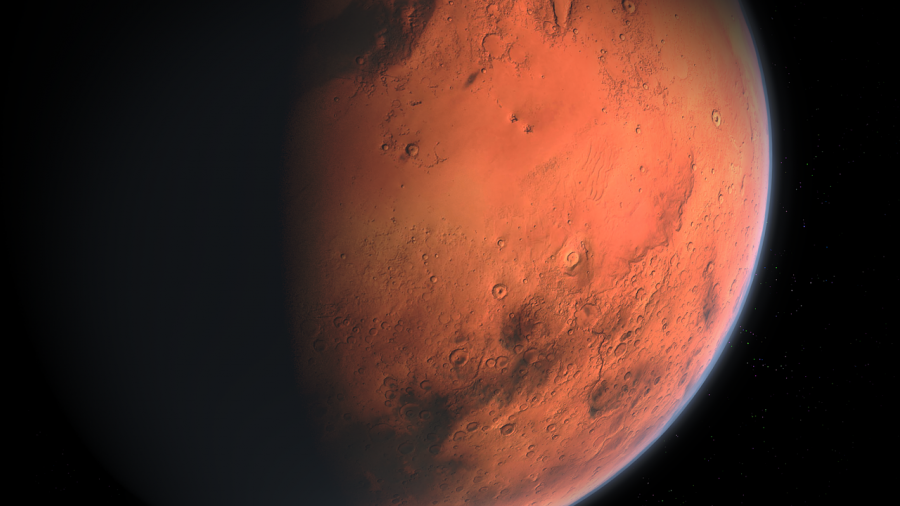Underground Lake Discovered On Mars
This past July marked a breaking scientific advancement: scientists have discovered a lake on the south pole of the planet Mars. A mile below the surface of Mars lays a huge reservoir, 12 miles wide. The region it was discovered in is called the Planum Australe, a long stretch of thick polar ice. Using radar measurements taken by European Space Agency’s Mars Express orbiter, scientists believe that areas where the radar is highly reflective is water. Scientists believe that due to the high probability of there being water on Mars, the higher the chance of there being life, mostly microbial life, on the planet.
The most obvious signs of Mars once being covered with water are the ancient inlets that have shaped the planet we see today. In 2015, it was reported by NASA that a team of astronomers had spotted water seeping down slopes of the planet, though the interpretation was buried in doubt by US Geological Survey researchers later that year, claiming it was only tumbling grains. More recently, Italian researchers have analyzed, after compiling studies across 2012 to 2015, that radar waves sent to the surface of Mars penetrate layers of ice, but are strongly reflected back, presumably by water underneath. John Bridges, a professor of planetary science at the University of Leicester supports the study, saying the scientists made a rather convincing case and that it was a “careful analysis of data.” Elena Pettinelli, a scientist at Roma Tre University, said that there was no way to officially tell if the body of water was a lake or an aquifer with water in between pores in the Martian rock. However, if it were a lake, then it would likely resemble the largest subglacial lake in Antarctic, Lake Vostok.
Despite the knowledge of how wide and how deep below the surface the body of water is, scientists are unable to confirm how deep the lake goes. The radar pulses bounce back off the water, and don’t reach the bottom of the reservoir. Researchers can only guess that the water is around one to two meters deep.
It is known that the water in the lake is incredibly cold. The temperature has been estimated to be around -68 degrees Celsius, or -90 degrees Fahrenheit. Despite being so far below zero, the water is thought to remain a liquid, due to the immense pressure, and contains salts found on the Martian surface, including magnesium, calcium, and sodium compounds called perchlorates.
Hardly being the ideal way of life, at least as we know it, the water could be able to support microbes that have adapted to such salty and cold conditions. Bridges believes that the harsh environment would be too much to support even most adapted microbes. The high content of salt in the water helps keep it a liquid, but wipes away the strong chance of their being sustained life within the lake. Despite that, the severe radiation the planet receives daily on the surface would not be a problem for any potential life living underground, according to Mark Sephton, who researches life in intense conditions at Imperial College.
With this new discovery fresh in researcher’s pockets, their motivation to scan the rest of Mars’ surface for any possible subterranean reservoirs has increased, and with that, hopefully will the discovery of any form of life on Mars.








